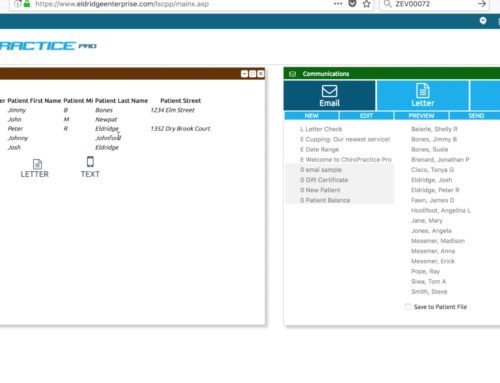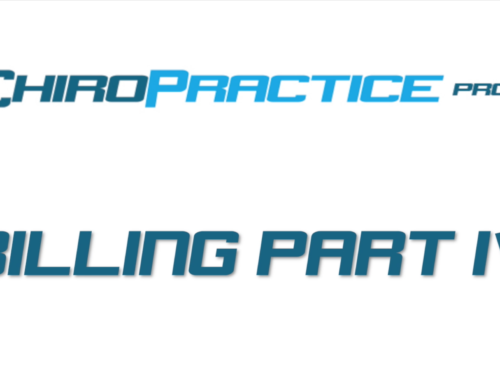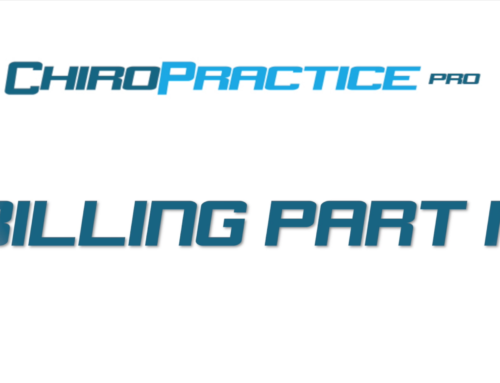
Billing Setup
The Clinic Setup deals with general clinic information and setup for the system. It’s the first tab in the Setup Window.
The first portion of the Clinic Setup is the Name, Address and Contact Information for the clinic.
Next is the Time Zone. This makes sure the time displayed in the system is correct for your time zone.
The Session Timeout is used as part of our security measures and ends the current session after the time shown. The time is calculated from the last action on our servers. This should be set long enough to make sure you can complete exams, but short enough so if you neglect to close your window or logout, your system cannot be inadvertently accessed.
The Optum Insight ID and Password are used when you use our system to send insurance claims. These values will be provided by Optum. Watch the insurance billing video for more information.
Billing locations allow you to track billing by locations. These can be real or virtual locations. For example, if you had two physical locations and wanted to be able to setup the system to distinguish between the two, you would list the locations here.
Patient Information on Bill will show your desired choses for the patient information on the patient bill. The left side is what is available and the right side is what is selected. Select a chose from the left and click the arrow to move it to the right. You can also remove information from the bill by clicking on the right column and select the arrow to move it back to the left.
The Clinic Information on Bill is similar in that it allows you to select what clinic information is shown on the patient bill. You can also include a note to go on the bottom of your patient bill. Note examples would include: “Due upon receipt,” or “Thank you for your payment.”
You can choose the Envelope Style so the address on the patient bill will show in a windowed envelope. You will need to fine-tune the setup using the Left and top margin to get it to fit just right. Fine-tuning is required due to printer and browser settings that cannot be controlled by ChiroPractice Pro. You also have the option to include the return address on the bill.
The next checkbox is used when you print a CMS1500 form for insurance billing. There are some settings that you can change and they show in a box on the printing page. Once these settings have been set, and you no longer need to change the settings, this check box can be selected and the print options on the CMS1500 can be hidden for your convenience.
Finally, you have an option for displaying the diagnosis codes in the Patient Data Window. You can either set them to display by the code or by the date they were assigned.
The next tab, Providers, sets the Billing Providers, Submitters, Service Facilities, Rendering Provider, and Referring Providers, primarily for insurance billing. You can create an unlimited number of lines in this section and set the default providers for your claims. You can change the providers on individual patients and claims, but these are the default for the system.
To create a new line click the Add New button below the table and fill out the appropriate information. Not all the information is required for every provider, but should be filled out as completely as possible.
There are some important portions of this form that must be considered. The first consideration is Person and Non-Person. A Person cannot be a facility and a Non-person cannot be a Submitter, Rendering Provider or Referring Provider.
If a person is set as the Default Billing Provider, the person can be used as default for all the items. The “Pay To” should only be used if the checks for insurance payment go to a different location. Addresses cannot be PO boxes unless it’s used in the “Pay To” line.
Taxonomy codes are not generally used, but some insurance companies will require them.
Tax ID’s are input for Insurance Billing.
Providers, and Zip codes must be 5+4 numbers.
Click the “I” [information icon] to display the lines information and click the “X” to delete the line.
The next tab, Insurance, is for insurance companies billed by your clinic. Add new insurance by clicking the Add New button at the bottom of the table. If you are sending electronic claims through Optum, you only need the Company Name and the payer ID. You only need to provide the address when you print claims on CMS1500 forms or drop the claim to paper for submission. To find the Payer ID, click on the Payer ID link.
Charges make up the next tab. The charges are listed by category and CPT Code. To edit a charge, click the charge in the list. To add a new charge click the Add New button, and to delete a charge, select it in the list and click the Delete button.
The Charge code is a unique identifier like the CPT code for the charge. A Charge code is required even if it is not a billable code. The Description is the charge description and will show in lists and on bills. The Amount is the dollar amount of the charge.
The Category allows you to select or create new categories for you charges. You can sort charges easily by your desired categories that you use in your office. In our demo, we’ve sorted the charges into CMT, Exams, Modalities and other categories.
The First check box is Taxable which makes the charge subject to the sales and/or local tax provided in the Clinic Information tab. If this is not checked, no tax will be calculated.
The second check box is Billable. If this is checked, this charge will be available for a claim to be submitted to the insurance company.
If you have a default modifier for the charge, input the modifier in the Billing Modifier box. This will always show with this particular billing charge.
You can also track the inventory of items in ChiroPractice Pro. Current Inventory is where you set your current inventory for products. The inventory set point will alert you when your current inventory drops below this number for restocking or reordering.
Diagnosis Codes is the next tab.
Similar to the charges the diagnosis codes are listed by category.
Clicking a diagnosis code in the list will show you the details for the code and the Add New and Delete buttons work the same as in Charges. Diagnosis codes can be anything you want including ICD9, ICD10, or other systems of diagnosis. If you have a list of ICD10 codes that you use frequently or you would like a list of common ICD10 codes input into your system, just send us a help request.
The description is used to identify the code in the system and you can assign or create groups here.
The final tab, Attorneys, in the Billing section is a list of attorneys. This is similar to the Insurance tab and you can assign the attorneys to a patient in the Patient Data Window.
Click the “add new” to create a new attorney and the “I” [information icon] button for information. The “X” deletes the attorney.
We’ve just reviewed the options and setting for Billing in ChiroPractice Pro. If you have any questions, send us a support request or email us at info@chiropracticepro.com.




